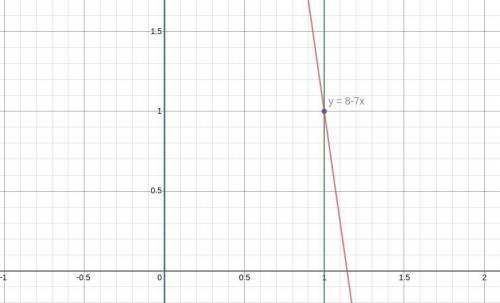
Mathematics, 21.12.2019 03:31 sweetyus06
Use the intermediate value theorem to show that there is a root of the given equation in the specified interval. ex = 8 − 7x, (0, 1) the equation ex= 8 − 7x is equivalent to the equation f(x) = ex− 8 + 7x = 0. f(x) is continuous on the interval [0, 1], f(0) = , and f(1) = . since f(0) < 0 < f(1) ,there is a number c in (0, 1) such that f(c) = 0 by the intermediate value theorem. thus, there is a root of the equation ex= 8 − 7x, in the interval (0, 1).

Answers: 2


Another question on Mathematics

Mathematics, 21.06.2019 19:30
Which of the following is the explicit rule for a geometric sequence defined a recursive formula of a -5a for which the first term is 23?
Answers: 1

Mathematics, 21.06.2019 23:30
In the diagram, ab is tangent to c, ab = 4 inches, and ad = 2 inches. find the radius of the circle.
Answers: 2

Mathematics, 21.06.2019 23:40
Sanjay solved the equation below. which property did he use to determine that 7x+42=42 is equivalent to 7(x+6)=42 7x+42=42 7x=0 x=0
Answers: 1

Mathematics, 22.06.2019 02:00
Deena is planting two rectangular gardens. one garden is 3.67 feet by 8.56 feet, and the other garden is 3.67 feet by 7.45 feet. which expression does not respresent the total area in square feet of the two gardens
Answers: 2
You know the right answer?
Use the intermediate value theorem to show that there is a root of the given equation in the specifi...
Questions


Mathematics, 10.09.2019 19:30


Biology, 10.09.2019 19:30

Mathematics, 10.09.2019 19:30


Mathematics, 10.09.2019 19:30



Social Studies, 10.09.2019 19:30

History, 10.09.2019 19:30









 on the interval [0, 1].
on the interval [0, 1]. between x = 0 and x = 1.
between x = 0 and x = 1.




